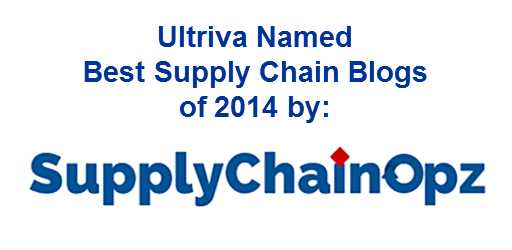This is the third in a series of articles by SuppliersOf.com to introduce and discuss lean supply chain management. Previously discussed was having visibility on demand all the way through your customers to help eliminate surprises. This article focuses on providing visibility to suppliers.
Wouldn't the world be a better place if whenever you needed something, it would show up right where you need it? No more waiting, no more lead times, just hold out your hand it magically appears.
To Err is Human
 The fact is most orders from suppliers are initially driven by forecasts, where we hope we've estimated right, then we realize we've either over- or under-ordered or we've ordered the wrong thing, or sales have sold something else, the list goes on and on and keeps procurement managers up at nights.
The fact is most orders from suppliers are initially driven by forecasts, where we hope we've estimated right, then we realize we've either over- or under-ordered or we've ordered the wrong thing, or sales have sold something else, the list goes on and on and keeps procurement managers up at nights.
It also creates tension with suppliers, since they’re the ones having to deal with returns, or having to expedite additional units to be shipped, or arrange a whole new shipment. It’s not easy for anyone in the whole chain.
Whenever this occurs there’s always a blame game, someone made a mistake, estimated wrong or something else. The fact is that humans are simply bad at estimating, we don’t see outlying situations, we base our decisions on assumptions. This isn't a lapse, it’s human nature. It was first officially studied in 1979 and it was found that people overestimate their own capability and underestimate others’, regardless of experience with the task at hand.
All of this means that surprises will turn up, mistakes will happen. The question is really to make sure that you’re not reliant on vague estimates and that unforeseen events are visible as quickly as possible.
To Have Visibility is Divine
We previously discussed having visibility on demand all the way through your customers helps you eliminate surprises like this in your own processes, so similarly providing the same visibility to your suppliers gives the same advantage. The Collaborative Supply Portal from Ultriva provides similar capabilities to the customer portal previously discussed, with some added benefits. The principal feature is that your suppliers get looped in on the demand cycle you've already established both in your factory and with your customers. And it does so on a part level, so as demand rises for a particular product CSP will automatically escalate demand for all the component parts.
The unexpected benefits however is the visibility that’s provided down to the customer, all of a sudden you can have a view all the way up your chain to determine where you've got additional waiting and calculating your overall lead time becomes trivial rather than a game of pass-the-parcel with each department.
It’s this concept of end-to-end visibility, allowing demand to flow all the way up the chain and for each stage to pull what it needs from its predecessors that makes having a single integrated solution such an advantage and why we've focused on a single solution in this series. Each component gives benefit, but they really shine when you use them all.
Suppliers get a benefit as well, essentially the same benefit you have by understanding your customers demand, their process can become leaner, they can carry less stock and improve service times.
Continuous Improvement
As we've said though, things will always go wrong, and it’s an important principle of lean thinking to continuously improve your processes by going to the root cause of the problem. Therefore you also need to ensure you monitor supplier ship dates, delays and order fulfillment rates.
Most procurement departments do this evaluation once a year when it comes time to renegotiate. The more modern approach however is to fully partner with your suppliers, constantly evaluate their performance and feedback just like you would on an internal department and work with them to improve the whole chain. Using a collaborative portal allows you to continuously track performance and be able to have a single source of truth visible to both parties.
Success Loves Company
An important point to think about is that implementing a system like this revolves around supplier adoption. So how do you influence your suppliers to join you on the journey to a lean supply chain? You can simply insist on it during negotiation and build it into the contract, however this is likely to start the relationship off on the wrong foot. No one likes being forced to do business a certain way. A more persuasive approach is to give them a tour of your own lean operation, let them see the benefits of just-in-time delivery, understanding demand and the power of pull.
It’s hard to disagree with results, and the more they see the advantages you have, the more they’ll understand that by joining you on the Lean journey it increases everyone’s benefit.
The original article, What If You Never Had to Wait for a Part? appears on the SuppliersOf.com website.



